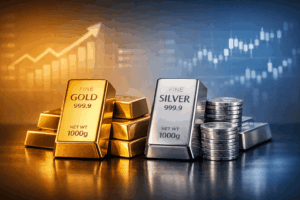Gold prices slipped slightly to around $3,340 per ounce as investors await Federal Reserve Chair Jerome Powell’s speech at Jackson Hole on Friday.
The precious metal had gained on Wednesday after President Trump called for Fed Governor Lisa Cook to resign.
Markets expect the Fed to cut interest rates by at least 25 basis points next month, which would support gold prices since gold doesn’t pay interest.
Gold has risen over 25% this year, reaching record highs, driven by central bank purchases and ETF investments.





